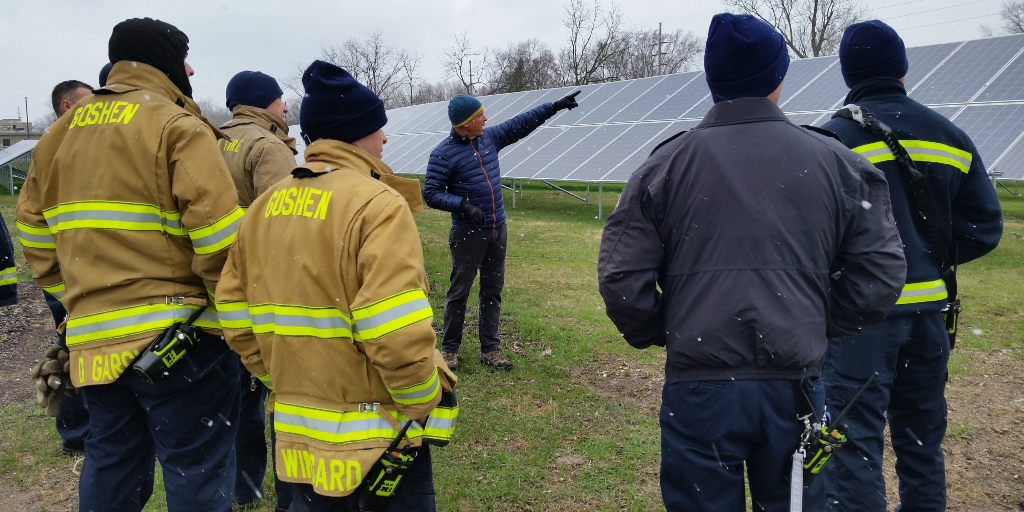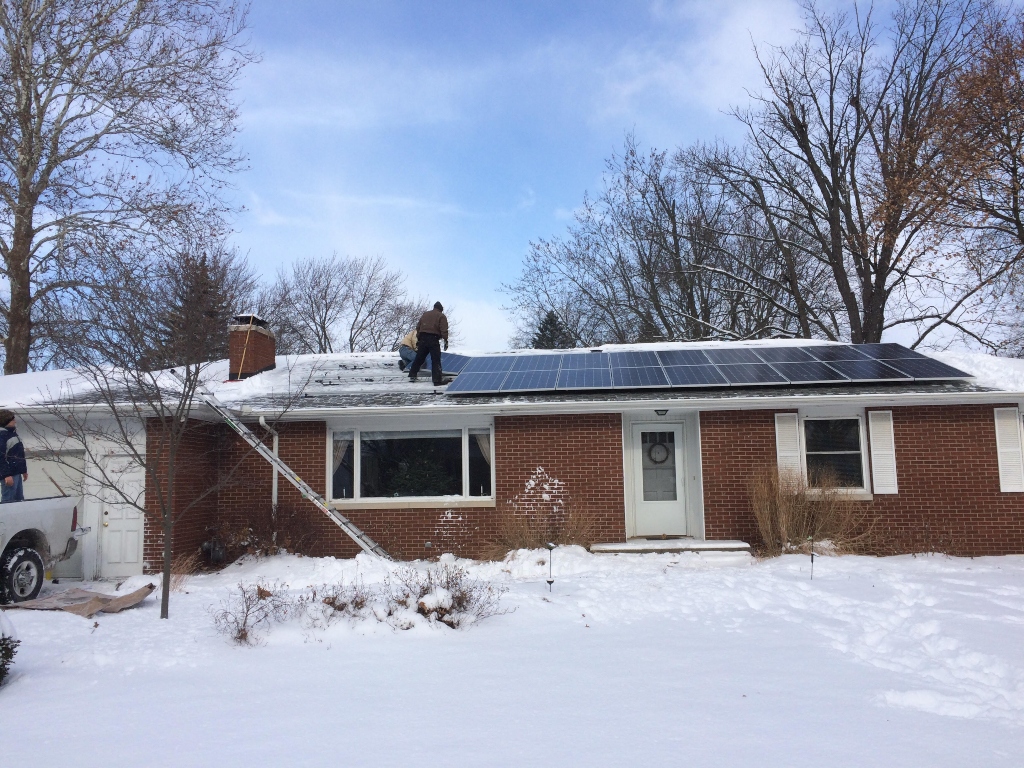As of spring 2020, seven MACOG municipalities and counties – the cities of Goshen, Nappanee, South Bend, and Plymouth, and the counties of Elkhart, Marshall, and St. Joseph – have received SolSmart designation at either the bronze or gold level. Each community established efficient permitting and inspection processes, put helpful information online, and participated in training sessions on the codes and safety related to solar energy. The adopted zoning code amendments helped clarify requirements for solar energy systems, simplifying the installation process.
The actions taken by the communities through the SolSmart process can reduce installation soft costs, or the non-hardware costs such as permitting. Thanks to the improvements the communities put in place, the overall cost of installing solar has been reduced and the solar industry is better prepared to expand more rapidly in the region. Further, communities have taken proactive steps to achieve solar readiness, such as equipping staff and implementing policies to efficiently and safely handle the increasing solar development that has accelerated with falling costs.
Solarize Northern Indiana has facilitated 117 new solar projects since 2017. These solar installations have been placed on homes, business, and faith meeting facilities throughout the region. The installations have resulted in an additional 705.8 kW of solar energy capacity in the region, with the average installation accounting for 7.3 kW, roughly the amount of energy to power a home, and the largest reaching 27.6kW, the amount to power a large community building. An additional seven workshops were held in 2019, with the goal of bringing even more solar to the region.
As word spreads through the MACOG communities, more home and business owners are becoming interested in their own solar projects and working with MACOG to make them happen.
Challenges
A general challenge for MACOG was the lack of understanding in the communities of how solar technology works. Many people in the region did not know what was technologically and economically feasible. For instance, some people thought there was not enough sun in the region, or that it was too expensive for them. MACOG worked to alleviate these misunderstandings through the Solarize meetings where they showed residents that northern Indiana has more sun than Germany, a world leader in solar, and that solar costs have decreased for small residential and commercial projects from nearly $9 per watt of solar installed since 2010 to under $3 per watt since 2017.
A challenge for Indiana specifically is the lack of solar-friendly laws and policies. Municipalities, businesses, and residents are generally not able to implement or use certain solar strategies such as Property Assessed Clean Energy Programs (PACE), Power Purchase Agreements (PPA), leasing, or community shared solar, so communities need to be more creative in what strategies they are able to employ. Strategies like reducing the soft costs of solar energy on the government side and working with a local Solarize chapter for group discounts helped drive down costs for residents.
Leah Thill, the Senior Environmental Planner for MACOG, gave the following advice:
“Local governments are often stretched fairly thin so it can be a challenge to take on extra work like solar initiatives. Having outside support to facilitate and design the various projects was crucial as opposed to the local governments each doing it on their own.”






